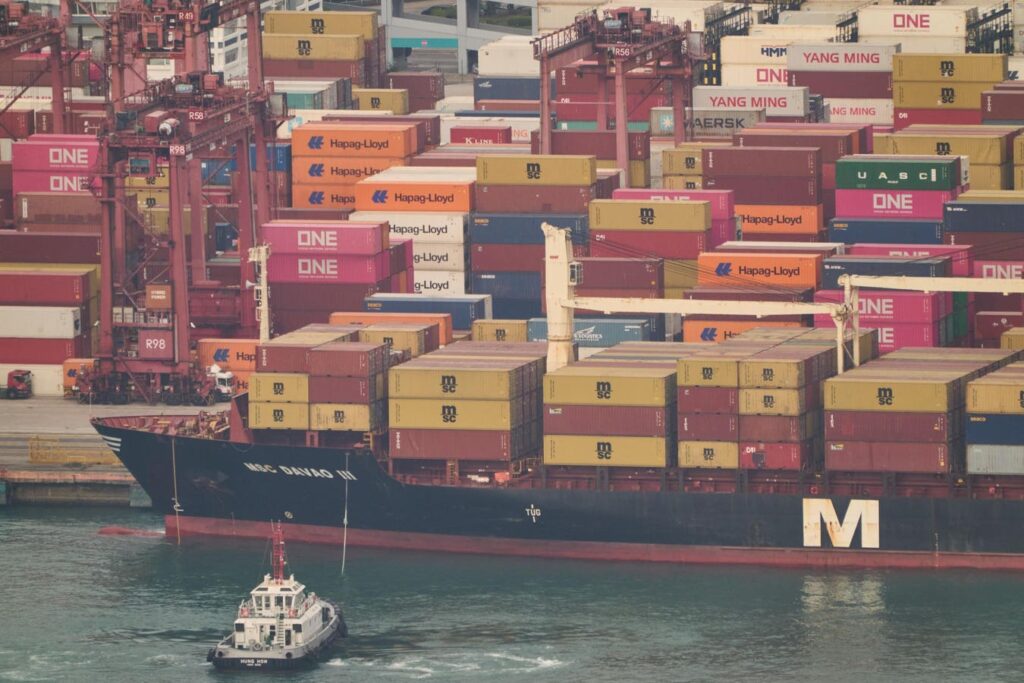Cast your mind back to the mid 1890s. One of the first income taxes in the United States had just been levied through the Wilson-Gorman Tariff Act, which was passed in an attempt to finance a reduction in deeply unpopular tariff rates.
Tariffs, the general public then knew, uniformly raised the cost of goods across the board and did so in a way that was not responsive to income. A 50% tariff on textiles, then, amounted to a 50% increase in the price of the good on the shelf—with no regard to whether the purchaser was scraping by or living high on the hog.
Protectionists were generally in favor of higher tariffs, believing it would drive up the demand for domestically produced goods by increasing the costs of imports. However, for those goods for which there was either insufficient domestically-produced supply or no domestically-produced alternative, the result was simply a price hike for the end consumer.
Thus, in an era when the germ theory of disease held about equal sway with theories involving the humors, folks knew tariffs were just regressive taxes. Nonetheless, one hundred and thirty some-odd years later, former President Trump has doubled down on advocating for a 20% across-the-board tariff on imported goods, if elected.
Tariffs Are Deeply Regressive
Tariffs are, quite simply, regressive. This means they disproportionately harm lower-income households – and it isn’t hard to see why. Tariffs increase the price of goods uniformly, with no mechanism to adjust based on the income of the purchaser. If the government imposes a 20% tariff on imported electronics, that 20% price hike will affect a low-income family in the same way it affects a wealthy family in terms of dollar cost at the register.
However, that electronic purchase will constitute a higher percentage of the total income for a lower-income family as against a medium or higher-income family. To put simple numbers to the concept, imagine a laptop that would be priced at $1,000 that now has a 20% tariff and costs $1,200 out the door.
The tariff, effectively a tax on the laptop purchase, is $200 regardless of who the purchaser is. If a college student making $10,000 per year purchases the laptop, the tariff will constitute 2% of their income—for someone making $100,000 per year, the tariff would only be 0.2%. This is the functional equivalent of taxing the latter at a rate one-tenth that of the former—a regressive tax.
Tariffs Rarely Protect Domestic Industry
While tariffs are intended to protect domestic industries by making imported goods more expensive, they rarely succeed without some form of collateral damage. When there is no viable domestic alternative to an imported good, consumers are simply stuck paying the tariff. There is no mechanism to pass the cost back to the export country beyond a reduction in demand for the tariff-laden good.
Thus, if there is a tariff on foreign-produced electronics, but no competitive US manufacturer for those same electronics, the result is just a higher price for the end consumer. A recent report by the Consumer Technology Association found just that outcome: Trump’s tariff plan would increase the cost of laptops and tablets by 46% and smartphones by 26%.
The optimistic take on these price hikes would be that they represent pent-up demand for domestic alternatives to the imported goods. Even assuming this is true, however, the upfront cost would be shouldered by consumers. A college student purchasing a laptop for 46% more than its pre-tariff price will find little comfort in the knowledge that, at some indeterminate time in the future, their budgetary squeeze could give rise to a domestic laptop manufacturing industry.
The Cost of Tariffs Are Born by the Countries that Pass Them
Ultimately, the costs of tariffs are borne by the consumers in the country that passes them. Former President Trump’s proposal would cost US consumers some $3.9 trillion and there is no mechanism to make exporting countries foot that bill.
Additionally, higher consumer prices reduce purchasing power which lowers overall demand in the economy. This can lead to slower economic growth, job loss and, ultimately, recession. High tariff rates in the 19thcentury helped give rise to the Panic of 1893, a depression unmatched in the country’s history to that time.
In today’s global economy, the effects of high tariffs may not only come from within—a 20% tariff would likely trigger retaliation from other nations, further driving up costs and depressing economic activity.
Outlook
So here we are, over a century later, poised to make mistakes we learned while Civil War veterans still lived. Tariffs are regressive, economically damaging, ineffective at protecting consumers, ineffective at stimulating domestic industry rapidly or in the long term, and ultimately not a replacement for progressive tax policy.
Trump’s 20% tariffs would take a massive toll on American households—especially those least able to afford it. History has shown us the damage that tariffs can do, and it’s a lesson we would be wise to remember.
Read the full article here

